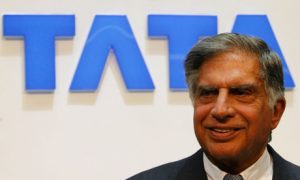SoftBank-backed cab aggregator Ola, which was planning to list on the public markets this year, now plans to raise a new round of funding at a lower valuation, according to people familiar with the development.
The down round and delay in IPO signify a sharp reversal in fortune for startups, after a record 2021 that saw sky-high valuations in the public and private markets. This will likely be the first down round of a large Indian unicorn after the boom last year.
“It may raise $150-$200 million at a valuation of $5 Billion compared to its last round that happened at $7 Billion as its IPO plans are delayed”, one of the persons cited above said.
A second source said Ola may go down this route as it was also yet to receive the $500 million loan that it raised from investors late last year.
“While the money has been wired from investors, it is sitting in an entity abroad. Ola hasn’t been able to get the money transferred to India because of pending approvals from RBI. But it has already started making interest payments on this, and has paid $10 million interest so far,” the person said.
While Moneycontrol could not ascertain the nature of these regulatory approvals, sources said these could be related to ECB (external commercial borrowings) and FEMA (Foreign Exchange Management Act) guidelines.
The company did not respond to queries sent on Monday.
Ola was last valued at $7.3 billion when it raised $139 million in its Series J round, led by Edelweiss PE, IIFL and Sunil Munjal-led Hero Enterprises, in what seemed like the last round of funding before its IPO. Before the $139 million, it raised $500 million from Warburg Pincus and Temasek, giving early backers Tiger and Matrix a part exit in the company.
Founder and CEO Bhavish Aggarwal had said that Ola plans to go public in the first half of 2022 at a Reuters Next conference in December last year.
Aggarwal also outlined plans to create a super app that would offer not just mobility but also loans and microinsurance. Ola has also been investing heavily in its instant grocery delivery business, Ola Dash, as it seeks to build services beyond ride-hailing, which took a hit post-pandemic. Global rival Uber, for instance, earns more from food delivery than its core rides business.
To be sure, Ola is not the only company that is pushing out its IPO due to the current market environment. Two other SoftBank-backed firms: Delhivery and Oyo have also deferred listing plans, as technology stocks in India and US have taken a beating, leading investors to wonder whether the epic bull run and a party fueled by low-interest rates may be ending.
This is also not the first time that Ola will be raising funds at a lower valuation than its previous round. In early 2017, it raised $330 million at a valuation of $3.5 Billion, compared to the $5 Billion it raised in its previous round.
The company has witnessed a spate of exits in recent months, including its Chief Financial Officer Swayam Saurabh, Chief Operating Officer Gaurav Porwal, HR head Rohit Munjal and General Counsel Sandeep Chowdhury,
Aggarwal is the founder of two unicorns- the ride-hailing business Ola and Ola Electric, which has ambitious plans to disrupt the electric two-wheeler market. It had started the deliveries of its electric scooters in December last year, a delay from its initial plans of an October delivery timeline.
While COVID-induced lockdowns battered its ride-hailing business in the last year, it has been making a recovery of late as India has opened up significantly in the last few months.
“Over the last 12 months, we have made our ride-hailing business more robust, resilient, and efficient. With a strong recovery post lockdown and shift in consumer preferences away from public transportation, we are well-positioned to capitalize on the various urban mobility needs of our customers,” Bhavish Aggarwal, who is the group CEO for Ola, said in a statement in July 2021.
In September, he tweeted stating that the gross merchandise volume (GMV) for Ola crossed pre-Covid levels, adding that the recovery from the second wave of Covid19 has been three times as fast compared with the first wave.



































